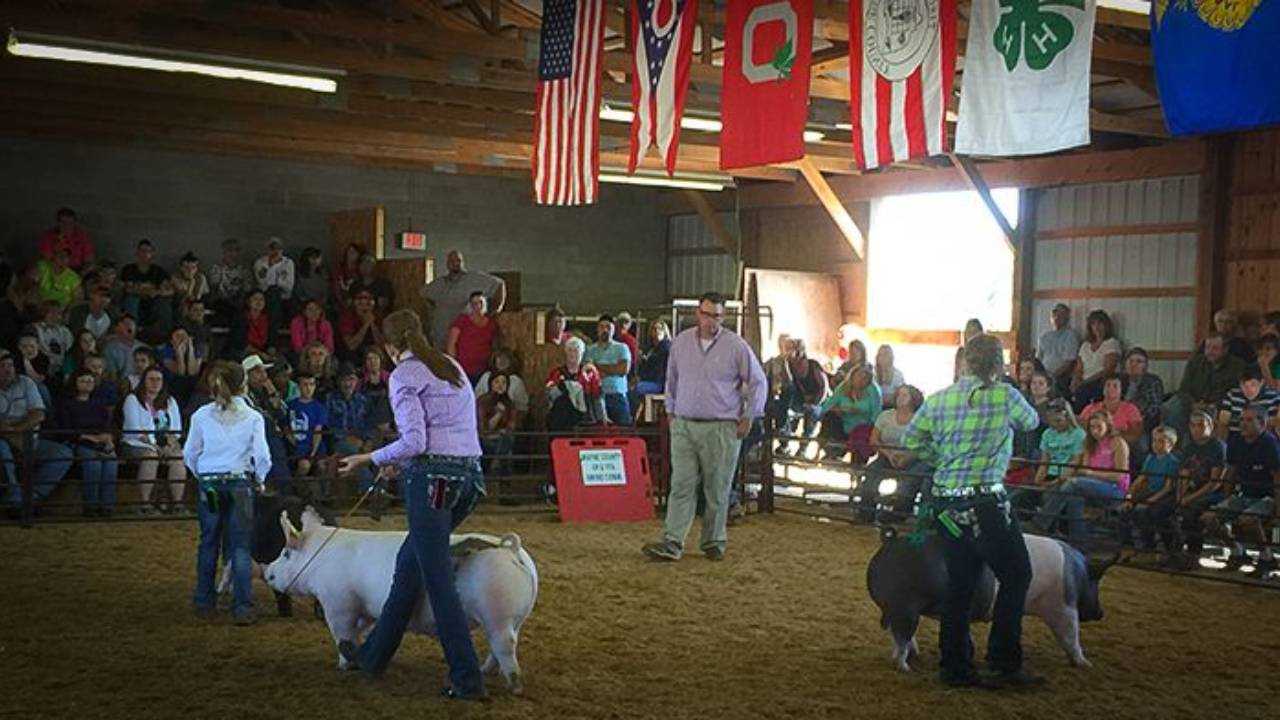5 Pig Show Rules County Fairs Should Scrap
Aug 08, 2023
County fairs are the first place most of us experience competitive livestock events. Often, they serve as a place where love of livestock and the junior livestock program are born. As such, county fairs should strive to be inclusive. They should be a great place for families to begin learning about animals. Most of all, they should be a place where we foster a healthy relationship with competition, because we live in a competitive world.
Competition comes with rules. I think everyone acknowledges this fact. For some reason though, county fairs seem to have the most rules of any show you can go to and, to be honest, some of them aren't too good. Here are 5 pig show rules county fairs should probably try to scrap.
1) Any rule including "from time of birth" This one should be easy to agree on. The overwhelming majority of junior livestock exhibitors do not own their projects at birth, therefore they cannot possibly have any control over anything that happened to that animal before it was purchased.
2) Any rule that exists, but is not enforced. If a rule is printed, it should be enforced universally. If the show committee is unwilling or unable to enforce the rule, they should delete the rule and/or announce that the rule will not be enforced.
3) Unenforceable rules/Rules enforced by a means other than the rule implies. I once lived in a county where the rule book stated pigs were never to be clipped (yes, it was also a 'from time of birth' rule. Facepalm.) The fair enforced this rule by measuring if pigs had at least 1/2 inch of hair. So, in this case, since the rule is enforced by measuring hair, the rule book should state a hair length rule, rather than a no clipping rule.
[Since many shows are non-terminal and tightly clipped pigs are no longer en vogue, a lot of clipping rules are outdated too, but that's another story for another day.]
3) Anything listed as a "guideline" in the rule book. It is a rule or it is not. "Guidelines" should be provided to exhibitors as tutorials, factsheets, supplements to the exhibitor's record book, etc. Placing guidelines in the rule book makes it unclear to many families, especially beginners, as to whether it is an enforced rule or simply a recommendation.
4) Animal age requirements for market hog shows. Today's show pig grows much different than they did 10 and 20 years ago. With selection, nutrition and management at play, it's not totally uncommon for a pig to be able to fit the appropriate market weight window for show eligibility for two or even three months of their life. This means more opportunity for exhibitors to take those hogs to more shows and gain even more experience, capturing more value from a project animal that's quite a substantial investment. If a market hog can make weight eligibility, it should be in regardless of when it was born. [There's a possible exception here if your event offers classes for registered pigs, but this isn't the case for the majority.]
5) Restricting the use of legal feed supplements/ingredients. Not only is it challenging and expensive to prove and therefore enforce such a rule, it creates massive complications and additional expense for families who exhibit livestock at more shows than just the county fair. Furthermore, rules against legal substances drastically expand the opportunity for tampering. In this writer's opinion, it's simply not the place of the county fair board to supersede USDA/FDA regulations about livestock feed. If that changes the market for the exhibitors animals, we should probably consider changing the way the animals are marketed rather than attempting to regulate the use of otherwise legal supplements and feed additives.
Here's a fun bonus since I'm on a roll.... County fairs should scrap trying to keep the judges a secret. The biggest shows in the world announce the judges well in advance of the show and the county fair can too. 😀
I am grateful to live in an area with an amazing local fair. I know other families aren't as lucky. If your fair needs some help shaping the rules to be more practical for today's show pig industry, feel free to pass along this article. Maybe it will help.
As leaders and fair committee members, I believe we should keep the rules simple and easy to follow. In a lot of cases, the less rules you have the easier and more fun it is to participate in the process as an exhibitor. Better yet, less rules make it easier to manage the show too. Too many rules create confusion. Confusion creates a lot of problems. The best thing you can do as a show manager is to keep things simple and open the gate to as many young showmen as you can. After all, our job here isn't to write more rules, it's to give the experience of livestock competition to as many kids as possible and help them foster a healthy relationship with that competition, because we live in a competitive world. BJE
herdly.io offers video-based online courses in showing livestock, taught by the industry’s most talented breeders and feeders. We're here to help you win - in the show ring and beyond.
Get the latest from herdly.io!
Join our mailing list to be the first to know when new courses are announced.
We hate SPAM. We will never sell your information, for any reason.

